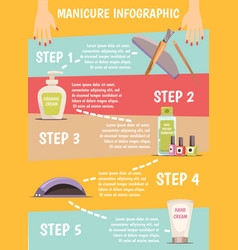Trigger points are taut bands of muscle that become rigid and restrict normal movement, causing pain, discomfort and weakness. They can develop in muscles, tendons, ligaments and bones as a result of overuse, stress, injury, poor posture or lack of adequate nutrition and hydration.
Athletes often develop trigger points in their neck and shoulders, hips and glutes. In order to treat these knots, a physical therapist will apply pressure on the trigger point.
How It Works
Trigger points are hyperirritable knots and nodules found in the muscle tissue of hundreds of places on the body. These tight bands of muscle cause pain and limit movement because they restrict blood flow, preventing oxygen and nutrients from getting to the area. This causes waste buildup and leads to pain, inflammation, and limited muscle mobility.
These trigger points can create a chain reaction in the muscles and the nervous system. When the trigger point is activated, your body will compensate with unwanted alternative movement strategies that can affect balance, posture, and strength.
Massage therapy involves finding and applying pressure to the trigger point. Our therapists use a variety of methods including sustained pressure, myofascial release, and micro-stripping release to help release the trigger point and restore normal muscle function. This can reduce referred pain and improve flexibility, balance, and coordination. It can also reduce delayed onset muscle soreness (DOMS) after physical activity and enhance postural alignment.
Identifying Trigger Points
Trigger points are tender, painful nodules that can be felt as tight bands of muscle. They are often located in the head and neck (temporalis muscle, masseter muscle, trapezius muscles) and around the lumbar spine. They are sometimes present in the thoracic spine trigger point therapy (rhomboids muscle, sternocleidomastoid muscle).
Trigger point therapy works by a therapist pressing and holding the trigger point for several seconds until it is released. This causes a release of a chemical in the muscle called nitric oxide, which opens up microcapillaries to increase blood flow. This breaks the trigger point’s pain-spasm cycle and helps your body heal faster.
Adding regular trigger point massage to your recovery plan can help you perform at a higher level. It can also help prevent the formation of muscle knots that are common in athletes. Incorporating massage into your training routine is a great way to improve the function of the body and reduce stress, which can contribute to muscle injury and fatigue.
Treatment
Your massage therapist will locate these distinctive tense, bumpy bands of muscle that have restricted blood flow. This results in a build-up of waste products and a lack of oxygen and nutrients. In addition to relieving pain by directly pressing the constricted muscles, your therapist may also use stretching and other massage techniques.
Releasing trigger points helps reduce delayed onset muscle soreness (DOMS) after physical activity. It can also improve flexibility and enhance performance by correcting imbalances in muscle function.
Athletes who regularly practice trigger point therapy recover from injuries and from muscle pain and tenderness much quicker than those who don’t. Trigger point therapy also helps prevent injuries and prevents muscle tightness from reoccurring. In addition, the therapist can educate athletes and trainers on proper movement patterns to help prevent future injuries.
Prevention
Trigger points are painful tight spots within the muscle. These knots occur when there is overuse, injury or underlying medical conditions. These tight bands of muscle fiber tense up and can inhibit healing, limit range of motion and cause pain in other areas of the body.
The exact cause of trigger points is unknown but repetitive microtrauma from repeated exercise, poor posture and spinal misalignments can be a factor. Lack of blood flow to the muscles and inflammation can also contribute to the development of these pain knots.
It is possible for athletes to prevent trigger point formation by incorporating massage therapy into their training routines. There are also a variety of self-treatment techniques and tools such as foam rollers and lacrosse balls that can be used at home to help relieve tension and reduce the risk of developing trigger points. It is best to learn self-treatment methods from a qualified professional to ensure safe and effective practice.
